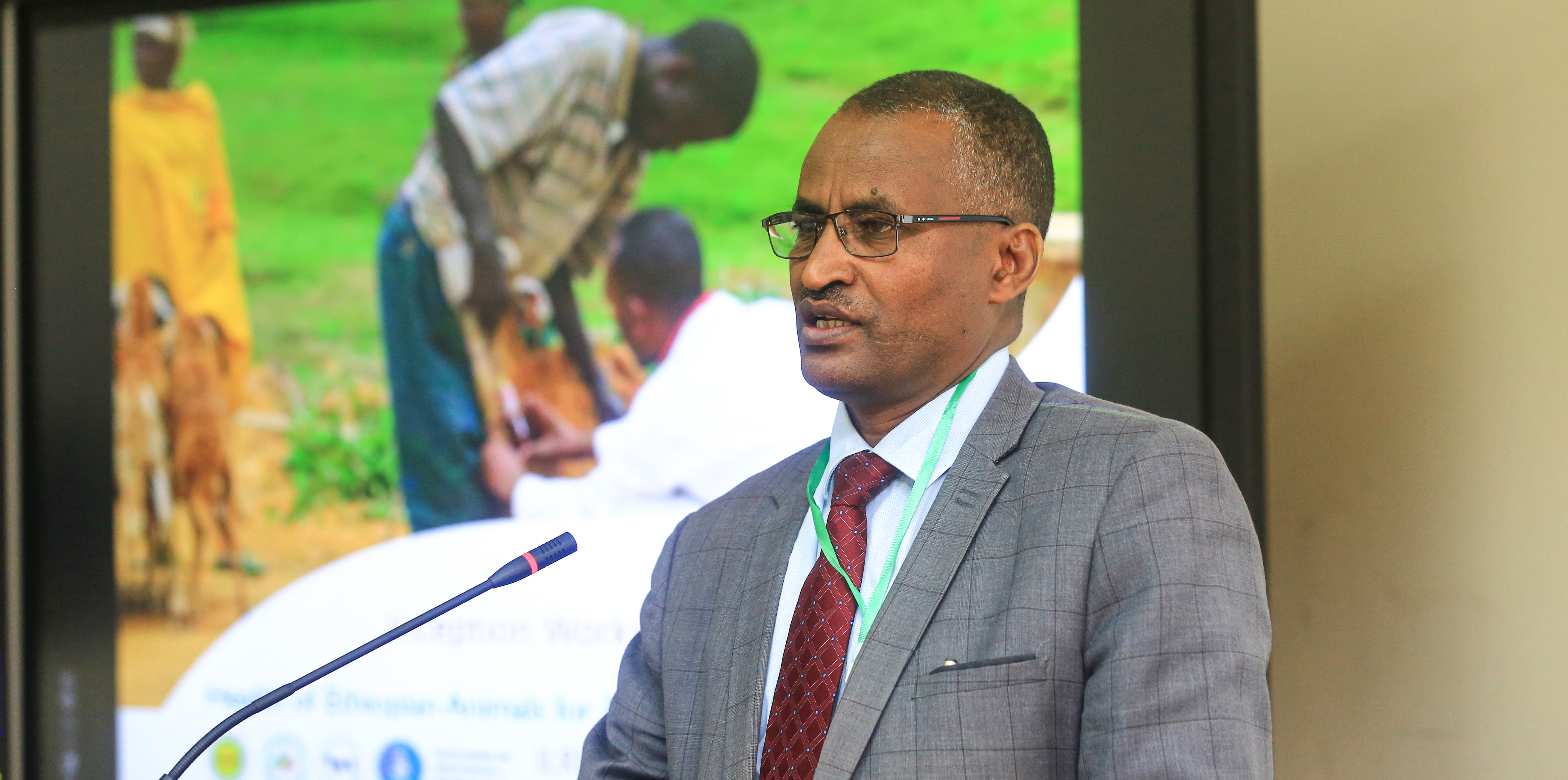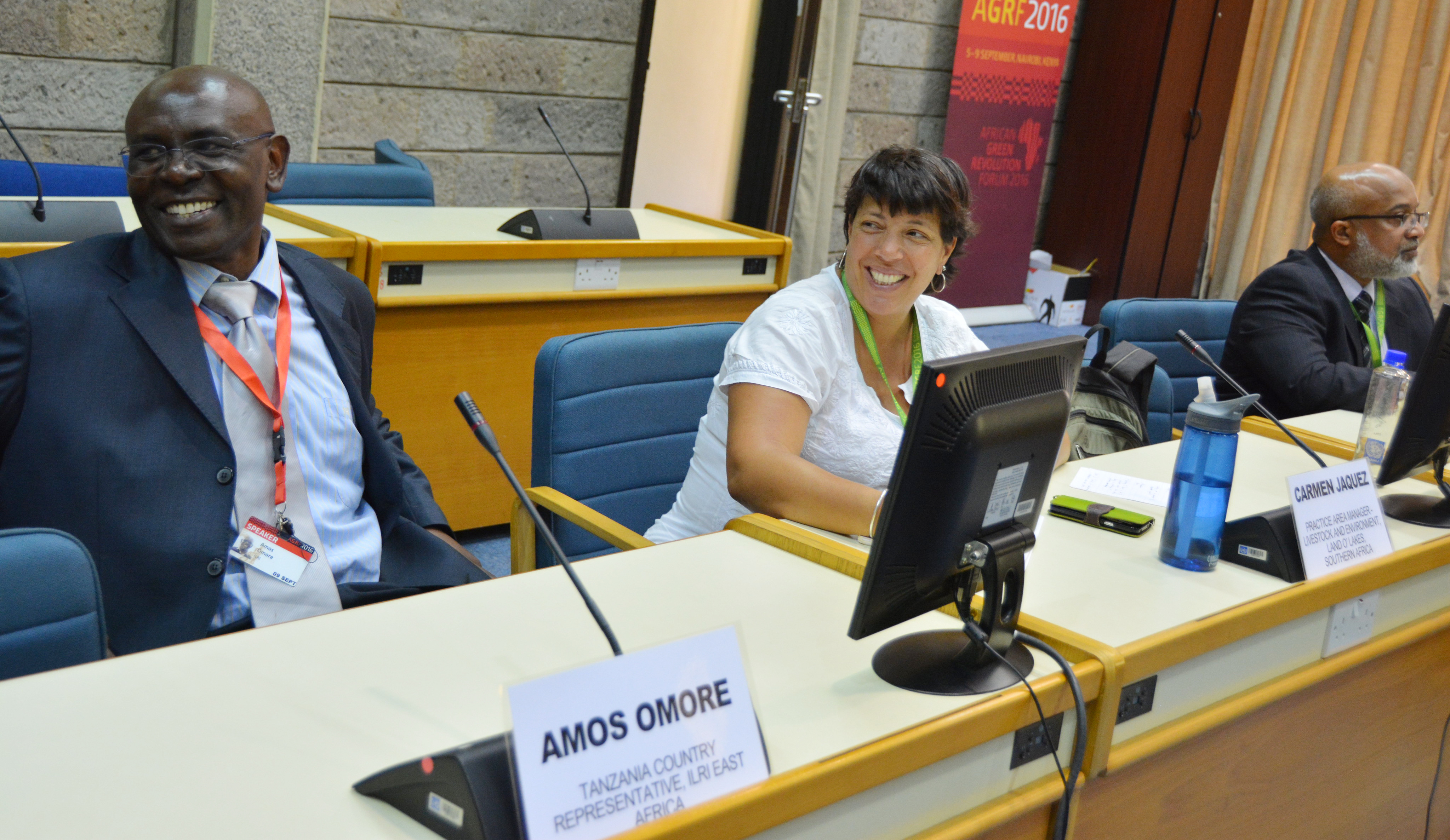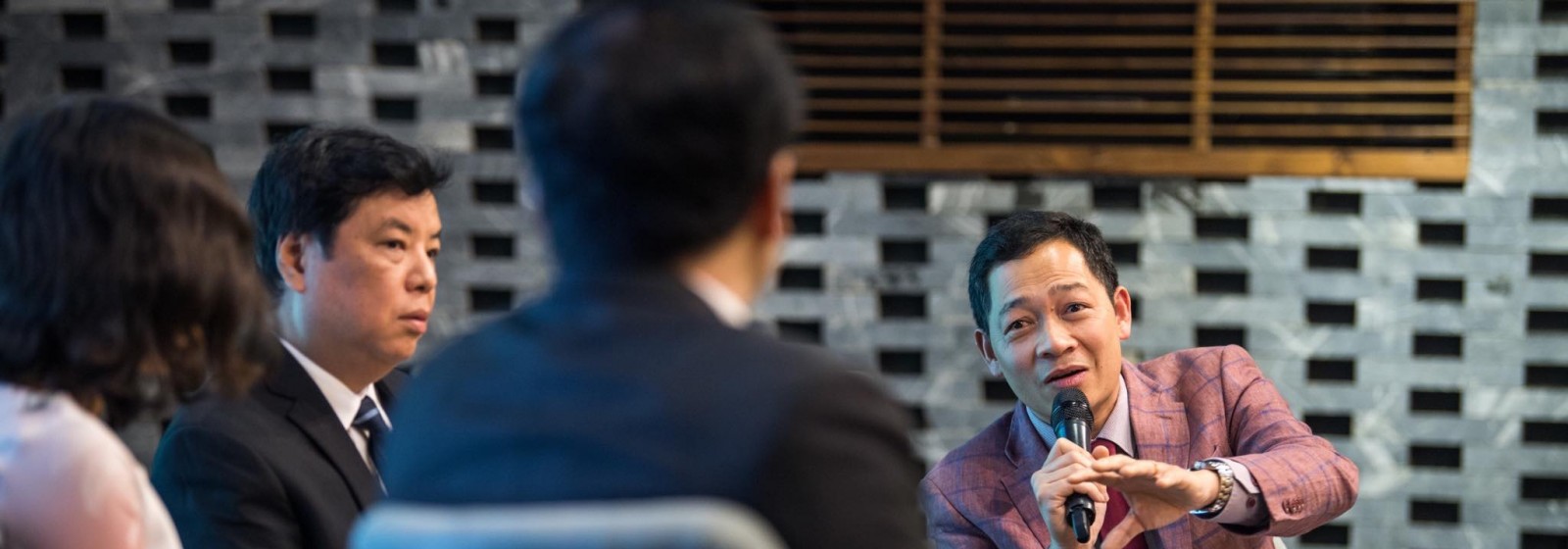In early 2019, 37 world-leading scientists published a landmark report calling for a ‘planetary diet’ that would have people greatly reduce their meat and dairy consumption as a way to improve their health and the environment.
When Ethiopia’s former State Minister of Livestock and Fisheries, Gebregziabher Gebreyohannes read the report and the media frenzy surrounding it, which often demonised meat consumption, he felt concerned.
“Reducing meat consumption may be necessary in countries with the highest consumption of meat. But in Ethiopia, where the average per capita meat consumption is less than 15 kg, meat remains the main source of protein to combat undernutrition,” said Gebreyohannes, who also has over 25 years of livestock research experience.
“Not only that, but farmers depend on more than 14 million draft oxen to plough their land so they can plant crops. Livestock in Ethiopia is not a matter of choice, it’s a matter of existence,” he said.
“I knew that I needed to publish a response that provided more nuance to this discussion and shared the perspective of smallholder farmers in my country.”
In collaboration with scientists and communications professionals working on the Global Livestock Advocacy for Sustainable Development (GLAD) project at the International Livestock Research Institute (ILRI), Gebreyohannes crafted an opinion piece that was published in mainstream media.
“He invited readers into a conversation and that’s a powerful way to change hearts and minds,” said Peter Ballantyne, ILRI’s former head of Communications and Knowledge Management who headed the GLAD project until December 2019.
Gebreyohannes’ opinion piece initiated a cascade of actions – from the Italian ambassador to the UN issuing a press release asking the World Health Organisation to retract its endorsement of the report, to other livestock researchers sharing their perspectives in the media and on social media.
“We were told by several donor agencies that these, and other engagement efforts, have helped them to have important conversations with their colleagues about livestock issues, and helped them rethink their agricultural investment strategies,” said Shirley Tarawali, ILRI’s Assistant Director General.

“This is important because the livestock sector in developing countries is critically underfunded; only 0.1% of aid funding through official development assistance is earmarked for livestock, even though livestock contributes between 15-80% of GDP across the developing world. If we want that investment to increase, it’s critical that we combine research evidence and science-based stories that help people see how important livestock truly are,” she said.
Know your target
Gebreyohannes’ opinion piece didn’t just emerge overnight; in his statutory role representing the Ethiopian government on the ILRI Board of Trustees, he could draw from several years of work by the ILRI scientists and partners on messaging, messengers and target audiences.
“We had to get really clear on what we wanted to say, who we wanted to say it, and who we wanted to hear it,” Ballantyne said.
“When it comes to the target audience, we really wanted to focus on getting the developing country livestock perspective into more mainstream development debates.”
This meant identifying the players who had most influence when it came to decisions about agriculture, health and the environment, and aiming to deeply understand their needs, experiences, behaviours and goals.
“For example, we refer to one of our main audiences as the ‘lonely livestock experts’. These are livestock specialists in donor and development agencies who are always making the case for livestock funding and programming, especially when there isn’t an explicit livestock program within their organisation. We know that they need to be supported with information, materials and evidence so they can make a strong case for investment in livestock,” says Michael Victor, ILRI’s current Head of Communications and Knowledge Management and GLAD project lead.
When it comes to EAT – the organisation behind the ‘planetary diet’ report - ILRI had been engaging with them for two years prior to the report’s release.
“We identified them as an organisation that is leading the conversation about the future of food,” Victor said.
“We began by joining forces with Chatham House to run a side event at the 2018 EAT Forum to get livestock in developing countries on their agenda. Gebreyohannes’ opinion piece, which came nearly a year later, was really shaped by these earlier engagements and influencing efforts,” he said.

Messages and messengers
At the same time as identifying target audiences, scientists and communicators spent many months working through hundreds of pages of livestock research papers to turn the evidence into powerful messages.
“This can take a long time because scientists are often, by nature, very detailed oriented and adverse to oversimplifying evidence,” Victor says.
“There was a lot of back and forth over many meetings and many months, but we were able to generate around twenty simple and clear messages that demonstrate how livestock are critical in achieving the sustainable development goals.”
The GLAD project created a website - WhyLivestockMatter.org – to serve as an evidence-based resource to communicate about sustainable livestock, that can be used by anyone. Messages fall under five key areas – nutrition, health, economic opportunity, gender and climate and environment – which are supported by scientific evidence and provide a more balanced perspective on livestock in developing countries. These key messages serve as the starting point for creating press releases, opinion pieces, speeches, presentations and other communications ‘products’.
The anatomy of a key message
How do you turn technical scientific data into a short, sharp key message? Here’s the process that was used to create each one of the 20 Smallholders and Livelihoods key messages.
“As you can see, a lot of effort was needed to just set out the messages and some specific supporting evidence,” Ballantyne said.
Step 1: Create an initial ‘message map’ILRI scientists worked with a communications company to produce a set of short ‘headline’ statements, each with a set of bulleted explanatory notes underpinning the headline. While smallholders were referenced in many places, at this early stage, there was no explicit headline just focused on them.
Step 2: Collate and distill evidence
Scientists reviewed the evidence and identified a set of evidence-based statements, each matched with an evidence summary and a simple qualitative ‘confidence’ assessment by the scientists of their confidence that the evidence supported the statement.
Step 3: Convene with partners
Emerging statements were presented for feedback and input at workshop with partners. One partner volunteered to ‘fact check’ the underlying data behind some of the headline statements.
Step 4: Turn statements into messages
The science teams produced final sets of evidence: comprising statements, the evidence behind each, key references and a qualitative confidence indicator. Each was accompanied by a summary. The communications company helped to refine these into a tighter set of messages for the website.
Step 5: Add investment options
At a meeting, a policy-influencing partner provided feedback that the messages and evidence would be more useful if there was also some guidance and options on what investors could do with the messages. So the science teams worked to develop a set of investment ‘options’ around each set of messages.
Step 6: Refine the message
ILRI scientists and communicators reviewed the almost-final message sets from the communications company to refine these into tighter messages.
Step 7: Launch the message
The final message was published on a custom-built website and launched at a partner meeting.
Step 8: Use the message to inform communications products
The final smallholder message was used in crafting communications products, including Gebreyohannes’ opinion piece as well as others in international news media.
Step 9: Revisit the message
In mid-2020, the original messages are being revisited to validate them with new evidence and align them to emerging priorities and themes of CGIAR, GASL, the upcoming UN Food Systems Summit and discussions on the roles of livestock in the African Union’s CAADP process.
Read more of these key messages at whylivestockmatter.org
With key messages crafted and target audiences identified, the team began to work on empowering messengers – respected livestock scientists and experts.
“Traditionally the role of the scientist has been to stay in the lab or the field and generate evidence used to inform decisions. But that’s changing. Researchers are recognizing that you have to engage in order to influence,” Ballantyne said.
For ILRI epidemiologist Amos Omore, it’s been a gradual realisation that he has a vital role to play in engaging with non-scientific audiences.
“I used to believe that, after producing research, I was to pass it on to people who were experts in communication to do the rest. Through training in communication and facilitation, and working with communications colleagues to develop a theory of change about how to attract more investors, I feel able to play a greater role in co-creating products using evidence to help groups of stakeholders to reach sustainable solutions,” he said.
Making the investment case
Running in parallel to their efforts to attract investments to the livestock sector in developing countries, ILRI is also supporting and building institutional mechanisms to enable countries to develop master plans for their livestock sector. This helps to ensure that when investors are interested to invest, there is a pipeline of costed and prioritized country plans that they can support.
While supporting Tanzania’s Ministry of Livestock to create a 15-year strategy for livestock development and a five-year livestock master plan, Omore – who is also ILRI’s regional representative for Eastern and Southern Africa – found his facilitation and communication skills came in handy.
“We compiled evidence and worked with key actors along the livestock value chain to demonstrate a very clear return on investment – to make the case for investing in livestock instead of another sector,” said Omore.

It has been a combined success so far.
Public and private donors, including big players like the World Bank, are investing in Tanzania’s and Ethiopia’s livestock sector because of these master plans. Livestock Master Plans have been developed in Kenya, Rwanda and Bihar state in India, and are in development in Uzbekistan, The Gambia and Odisha state in India.
ILRI and partners will be continuing to support the rollout of these master plans, by collecting much-needed data on the impact of resultant livestock investments on livelihoods, gender equality, productivity, health and the environment.
“A few years ago, a study found that since 1990, livestock research has been under-evaluated and so its impacts on livestock development were not clear. Ensuring we have rigorous economic, social, and environmental evidence will help investors feel confident that their funds are creating real change on the ground,” said agricultural economist Isabelle Baltenweck, who is leading the collection and analysis of this data as part of ILRI’s Policies, Institutions and Livelihoods program.
The use of compelling evidence has already played a part in influencing change in the policy space. At a meeting of the Comprehensive Africa Agriculture Development program (CAADP) – the key place where Africa’s agricultural policies are coordinated – ILRI and the African Union Commission made a strong case for more public investment in livestock. The evidence was so compelling that the meeting’s official closing statement included two clear calls for livestock-related action.
“If livestock is missing from the continent policies, the sector will not get the support at that level and may justify not being supported at country and local levels,” said Baltenweck.
Increasing investment is not about serving the agenda of one organisation, but ensuring the livestock sector as a whole is better recognised and resourced, says Tarawali who was recently appointed as the chair of the Global Agenda for Sustainable Livestock (GASL).
“Achieving the sustainable development goals will take all of us working together - international organisations collaborating with the private sector in developing countries, civil society organisations strengthening the voice of farmer cooperatives, and researchers working with governments. Not as ‘blind advocates’ for livestock, but to make evidence based strategies and decisions that strengthen livestock as part of the solution,” she said.
While COVID-19 has been a setback for many, the GLAD team has pivoted to focus on the key messages relating to livestock and human health that call for strengthening the prevention work against pandemics.
“We’re trying to debunk some of the myths about food safety, about how pandemics start and spread, and what you can do to stop them. Key to this is ensuring that we have not only the right evidence but also the right message, developed by the right people, at the right time and to the right people. It may seem simple on the surface, but it takes years to get it right,” Tarawali said.
--
This work on compiling and communicating evidence on the roles of the livestock sector in sustainable development is supported by the Bill & Melinda Gates Foundation and the CGIAR Research Program on Livestock.
